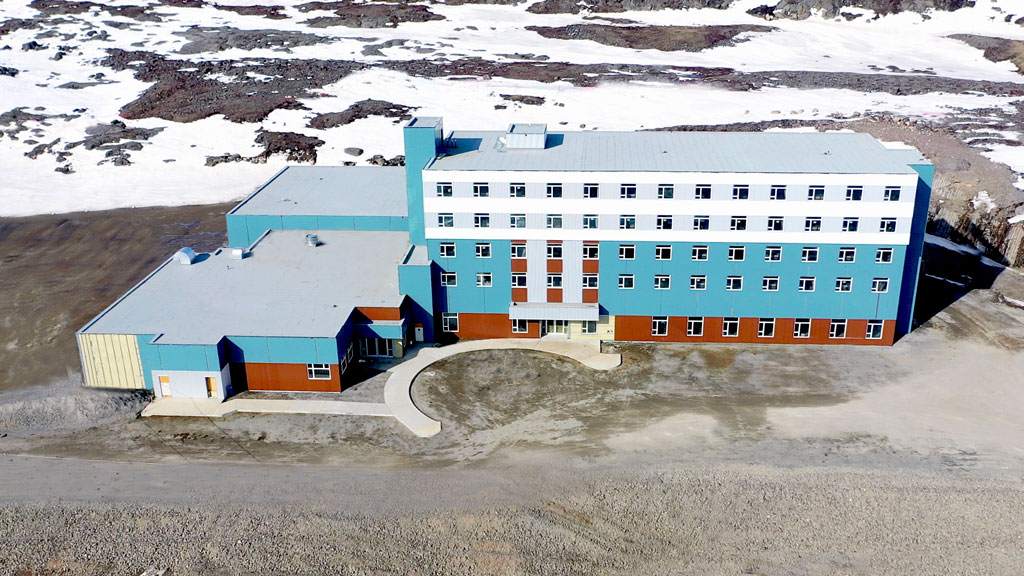Faced with some of the world’s priciest building costs, developers in the San Francisco Bay area are looking north to B.C.’s Stack Modular Structures Ltd., 50 per cent owned by partner Bird Construction, for a better-cost building solution using non-combustible steel modular units for mid and high-rise construction.
The key is non-combustible, said architect Peter Streith of Edmonton’s S2 Architecture and who has worked on Stack modular projects in Canada.
“We are changing how things are being done,” said Streith as steel modules step into the commercial sector providing a rapid construction for mid- and high-rise projects.
Canada has started down the modular path but mainly with wood and on six storeys structures. B.C. has changed its building code to allow 12-storey wood structures with the National Building Code expected to follow but buildings over six-storeys favour mass timber construction methods over wood modules.
In contrast, Stack, in collaboration with Bird, IBI Architects and RDH Envelope Engineering has developed a high-rise steel modular design for the North American markets that can support a 25-storey structure. In Europe and Asia, modular steel modular design buildings have reached over 40-storeys.
San Francisco, San Jose, Oakland and surrounding areas are seeing commercial markets booming but building costs are exorbitant, said Matt Hallaran, Stack’s director of project development.
Management and consulting firm Turner & Townsend’s “2019 International Construction Market Survey,” rate them as the world’s highest at 2018-year end at $416 per square foot on average compared to New York at $368 per square foot. The report blamed a lack of skilled labor and high cost of materials.
Hallaran said: “Like the saying goes – desperation breeds innovation.”
Hallaran said the benefits accrued in modular steel construction include a reduced construction time by as much as 40 per cent, yielding a faster return on investment for developers, enhanced quality control and less trucking of goods and waste material to and from the site. As well, it addresses skills shortages (especially in remote areas) as units are fabricated at Stack’s three modular factories in China and can be fitted out with all room amenities including the china and silver ware in the drawers.
“We have access to the largest supply chain the world,” Hallaran said, adding the company is currently in the pre-construction design stage for the 12-storey, steel modular Burlingame Hotel in the San Francisco Bay area in California. Stack recently completed a five-storey of Iqaluit Hotel on Baffin Island with the units shipped through thru the Panama Canal. Another hotel has been proposed for Richmond, B.C. but is currently seeking municipal approval. In Kitimat, Stack has built three-storey accommodations for LNG workers.
Hallaran said the use of modules for commercial construction along the Western Pacific Rim makes economic sense as they can be easily shipped. The average unit is 65- to 70-feet by 14.5 feet with a hall placed mid-point dividing the unit into two living areas. The units can be stacked side by side in storeys, with all mechanical, electrical and plumbing installed and ready to be connected on site.
The ability to stack the units (which can be manufactured to any size as long as they can be transported to the end location) has made them attractive to hotel, long-term care, multiple family residential, hospitals, and senior complex construction, he said.
RDH principal and building research specialist Graham Finch said the challenge with designing taller structures, including those using modular, is that as the building rises it is subject to greater wind and rain stresses which places importance on how the module’s units are joined together and gaps are addressed. He said Stack uses a “low-risk and simple” method that ensures the gaps where the units meet during construction are positively sealed and protected against air loss and water egress.
The units are also tested during transport.
“When you are shipping across the ocean they have to be watertight,” said Finch. The exterior envelope features the insulation on the building’s interior, he said, similar to what is seen on other steel structures. Finch said his firm did the factory review and testing of units during construction of the Iqaluit Hotel on Baffin Island.
Stack is not a new player in the modular industry. But, in 2017, Bird’s buy-in provided the capacity to springboard into the commercial and institutional markets stepping out from its traditional resource or industrial market.
“We are an integrated solution combining modular with conventional,” said Jason Kielau, Bird’s vice-president of operations, handling Stack projects. “No project is 100 per cent modular.”
In a hotel, there are underground parkade levels or the need for a grade-level podium (for the modules). Larger structures such as hotels, conference rooms and large span areas are add-on using conventional construction methods that use Bird’s experience.
The design process has been made into one-stop using Stack and Bird expertise. Developers meet with a Stack representative, bringing their own architect or using one designated by Stack. Through the design meetings, the requirements (electrical, mechanical, and plumbing) and building design down to the envelope are determined along with any conventional building structure requirements to be carried out by Bird. The units are manufactured, detailed inside, and shipped to the Western seaboard before being trucked to a final destination.
Kielau said there are two new emerging markets that the company sees. One is low-income housing, especially in larger cities where land costs are high and optimizing density on site is an advantage. He said that Stack is currently knocking on BC Housing’s door to generate interest.
“BC Housing has been using modular,” he said. The second emerging market is the Intensive Care Units of hospitals as units can be manufactured and shipped to sites throughout Western Canada or used to augment existing hospital capacity or serve as isolation areas.











Recent Comments
comments for this post are closed